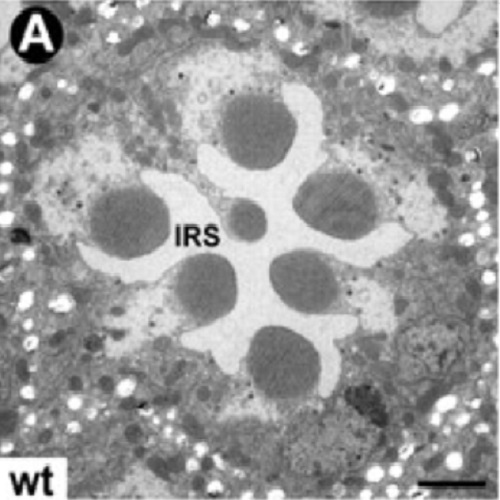Increased levels of the cytoplasmic domain of Crumbs repolarise developing Drosophila photoreceptors.
Photoreceptor morphogenesis in Drosophila requires remodelling of apico-basal polarity and adherens junctions (AJs), and includes cell shape changes, as well as differentiation and expansion of the apical membrane. The evolutionarily conserved transmembrane protein Crumbs (Crb) organises an apical membrane-associated protein complex that controls photoreceptor morphogenesis. Expression of the small cytoplasmic domain of Crb in crb mutant photoreceptor cells (PRCs) rescues the crb mutant phenotype to the same extent as the full-length protein. Here, we show that overexpression of the membrane-tethered cytoplasmic domain of Crb in otherwise wild-type photoreceptor cells has major effects on polarity and morphogenesis. Whereas early expression causes severe abnormalities in apico-basal polarity and ommatidial integrity, expression at later stages affects the shape and positioning of AJs. This result supports the importance of Crb for junctional remodelling during morphogenetic changes. The most pronounced phenotype observed upon early expression is the formation of ectopic apical membrane domains, which often develop into a complete second apical pole, including ectopic AJs. Induction of this phenotype requires members of the Par protein network. These data point to a close integration of the Crb complex and Par proteins during photoreceptor morphogenesis and underscore the role of Crb as an apical determinant.

- J. Cell. Sci. 2011 Nov 1;124(Pt 21):3715-25
- 2011
- Developmental Biology
- 22025631
- PubMed
Enabled by:
